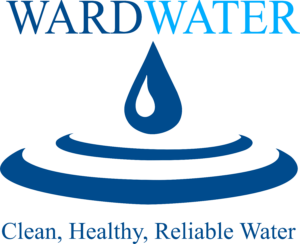 Maine water treatment and 3 commonly found problems that affect your health – what you need to know about these problems and what you can do if you have high levels in your well water.
Maine water treatment and 3 commonly found problems that affect your health – what you need to know about these problems and what you can do if you have high levels in your well water.
In this article we’ll take a brief look at:
-The 3 most common health related water contaminants
-How they affect your health
-What you can do to keep your family safe
Healthy Maine Living
We Mainers are a fairly lucky group, in my opinion. We get to live in a part of the country that has an abundance of gorgeous scenery and year-round outdoor activities. The food and dinning experiences alone could keep one’s belly and culinary curiosity satisfied for a lifetime.
Our towns are safe, and compared to other parts of the country, we have some of the best public school systems you could ask for – especially here in Southern Maine.
Our air is clean and, relatively speaking, so is our water…most of the time that is.
Maine Water Quality | Typically a Homeowner’s Responsibility
Unlike homes that receive their water from a public municipal supply, homes with private wells are not tested or managed by the EPA or any other government agency.
For those of us that receive our home’s water from a private well (the vast majority of homeowners in Maine), the responsibility falls on us and us alone to to test our water, and if needed, treat that water, to make sure our families are safe.
Although there is a long list of health related water contaminants all homeowners should know about, I’d like to focus on the top 3 contaminants we see, working in the water treatment industry, here in Southern Maine.
Top 3 Health Related Water Contaminants
Arsenic
Arsenic can be commonly found throughout private wells in Southern Maine and the rest of the state. “Pocketed” regions such as Gorham, Standish and Scarborough have been document as having some of the highest levels in Maine.
Of all the harmful contaminants we’ve treated for over the last 30+ years, Arsenic by far has been one of the most common health related issues found in home drinking water supplies.
Why it’s harmful
Arsenic has been linked to a long list of of serious health related concerns in children & adults. These include both cancerous and non cancerous health issues. Lungs, skin, prostate, liver, kidneys, and immune systems are all susceptible to exposure from Arsenic.
For more on the health effects of Arsenic check out Maine Doctors Finding Arsenic in Patient Lab Results. Also, feel free to review our Resources page for other sources of information on Arsenic.
How you know you have it
Arsenic has no smell, taste, color or noticeable consistency. If you haven’t tested your water for Arsenic, there is really no way of knowing if your water has it or not. If you have had your water tested for Arsenic, you will want to make sure the results fall below the EPA’s recommended maximum of 10 ug/L (parts per billion). Levels above this are considered an elevated risk for health related issues from Arsenic toxicity.
How to Fix It
The most commonly used and dependable Arsenic treatment technologies available today are Absorptive Arsenic Mineral Systems and Reverse Osmosis Systems.
The method you and your treatment professional choose will depend on several different factors. These can include; how high your Arsenic levels are, whether it is in Arsenic 3 or 5 form, your water’s pH level, the other minerals or contaminants in your water and the health & age considerations of the people in your home.
Radon
Radon is a toxic gas that can be found in private wells throughout Maine. In fact the entire Northeast region of the country is considered a “hot spot” for underground Radon buildup & release.
In addition to Radon being commonly found in the air of Maine homes, many people are still unaware that the same Radon gas can just as easily find its way into a home’s drinking water supply, as well.
Why it’s Harmful
Radon has been directly linked to several forms of cancers in both children and adults. The most common health risk stemming from Radon contamination is cancer of the lungs. In addition, internal organs such as the stomach are also susceptible to exposure from Radon Gas.
If your home has Radon in its water supply, you are coming in very close contact with extremely concentrated amounts of Radon through many of the conveniences you use every day. Radon gas literally aerates and concentrates itself into the air you breath through any water based fixture you use. The main risk of breathing this concentrated gas comes from close proximity devices – primarily shower heads. Following shower heads are dish washers and washing machines.
How you know you have it
Like Arsenic, Radon has no smell, taste, color or noticeable consistency. If you haven’t tested your water for Radon, you will want to do so to measure how much Radon might be present. If you have had your water tested for Radon, you will want to focus on making sure the levels are lower than the EPA’s recommended maximum of 4,000 pCi/L (picocuries per liter). Levels above this are considered an elevated risk for health problems stemming from Radon contamination.
How to Fix It
If your home has Radon in it’s drinking water there are currently 2 methods for making sure this gas is below the recommended maximum exposure limit.
At low levels of water Radon (4,000 pCi/L or less) carbon absorption tanks can be used to help reduce the level Radon gas in your water. Levels above this are considered too high for the safe or consistent removal of Radon. Although carbon systems are the most economical (initial cost) systems to install, they have several “downsides” you’ll want to be well aware of before choosing this option.
The most dependable and effective form of water Radon mitigation is through pressurized aeration, or “bubbling” type systems. The downside: they are typically 2-3 times the cost of carbon based systems. The upside(s): they can handle virtually any level of Radon found in Maine water. They also have none of the common homeowner concerns found with carbon based systems, such as Radioactive buildup or need for constant replacement and disposal of radioactive filter tanks.
Uranium
Until only recent years, most people in Maine had very little knowledge that Uranium represented a health risk locally, let alone might be found in their home’s drinking water.
Due to increased awareness, especially through real estate sales and home inspection testing, the health concerns stemming from Uranium exposure are beginning to become much more main stream and understood.
Much like Arsenic or Radon, well water Uranium is a well hidden toxin. Without proper testing there is simply no way to know if this carcinogen is in your home’s water supply.
Why it’s Harmful
According the EPA, persons in-taking Uranium amounts exceeding EPA standards (for water- 30 ug/L) are at a higher risk for cancer, liver damage, or both. Long term chronic intakes of uranium isotopes in food, water, or air can lead to internal irradiation and/or chemical toxicity.
For more indepth information on Uranium in Maine water, check out Uranium 101 | Is my Drinking Water Safe?
How you know you have it
I’m guessing by now, if you’ve read this article, you probably know the answer to this question….unless you’ve tested your water for Uranium their is simply no way to know if you have it. It is a colorless, tasteless, odorless carcinogen. We recommend performing a simple water Uranium test. You can do this yourself for around $25 through most certified testing labs.
How to Fix It
At the point of use level (such as for a kitchen sink), Reverse Osmosis systems do a wonderful job of removing Uranium from drinking and cooking water. These systems are small and relatively economical when compared to whole house treatment systems. Typical systems installed by a treatment professional should range between $1100 and $1400, depending on the home.
For whole house Uranium treatment, you’ll want to give serious consideration to installing an Ion Exchange Uranium system.
The EPA considers Ion Exchange as a best possible treatment practice for the removal of Uranium from well water. Although many companies still recommend going with a “whole-house” version of an Reverse Osmosis system, most homeowners won’t be able to afford the upfront and long term expense and maintenance of a whole-house RO system. Initial costs for these systems can easily exceed $10,000 (if not considerably higher). As remarkable pieces of equipment as RO systems are, they are simply an out of reach treatment solution for the average Maine family.
Photo Attributes:
httpwww.flickr.comphotosstevendepolo3761877701
httpwww.flickr.comphotosenekolakasta1473491270;
httpcommons.wikimedia.orgwikiFileElectron_shell_033_Arsenic.svg
httpen.wikipedia.orgwikiFileAmes_Process_uranium_biscuit.jpg








